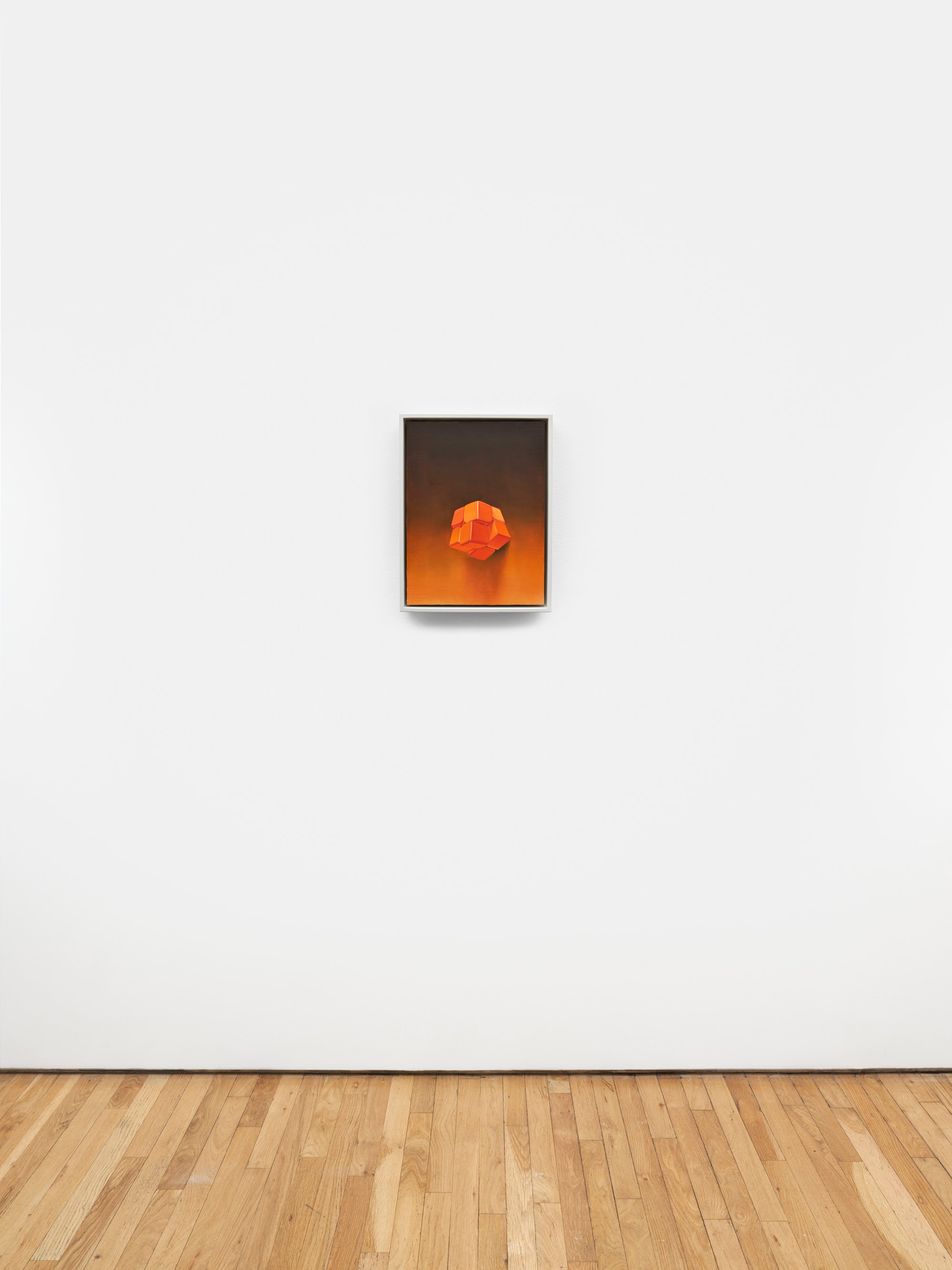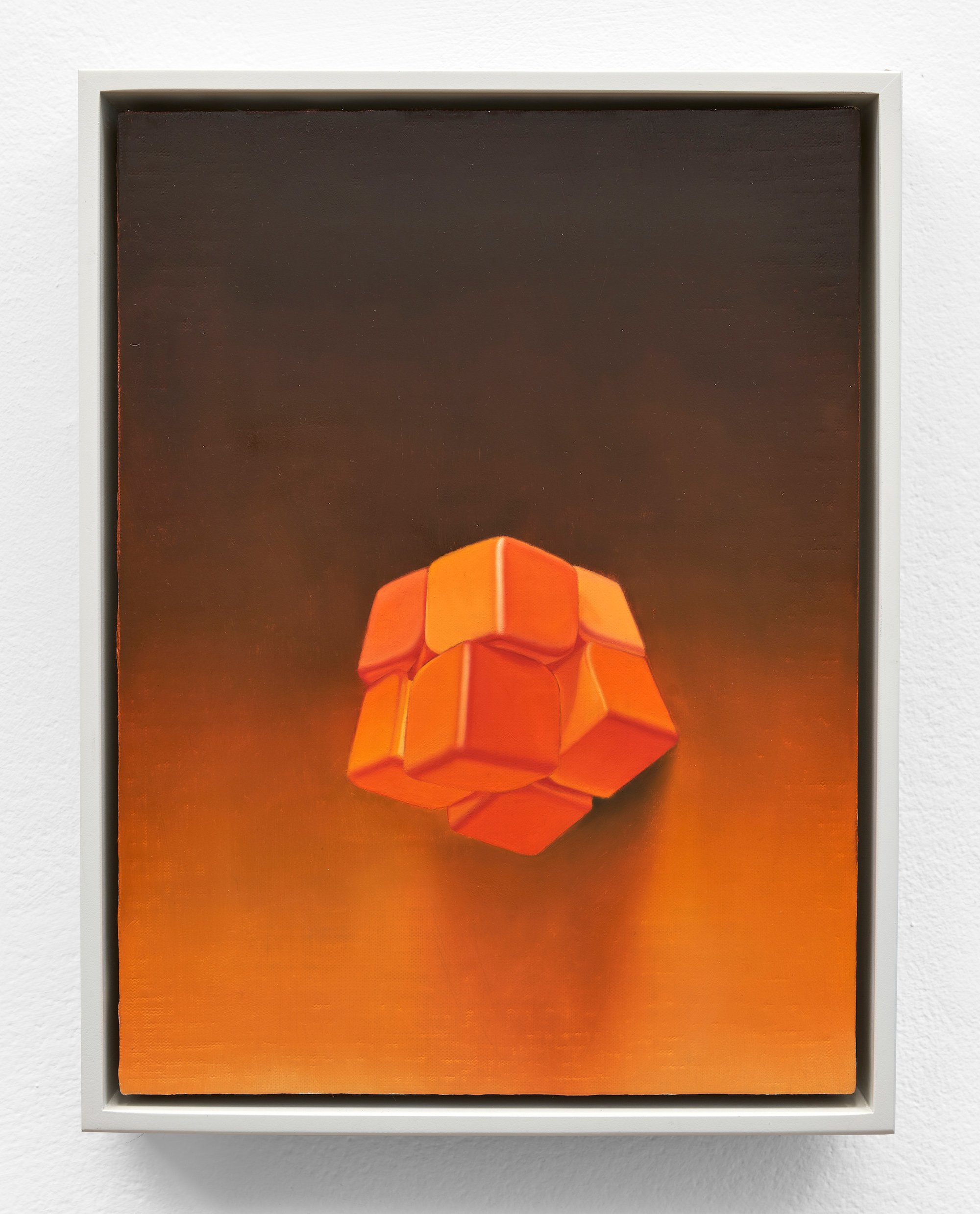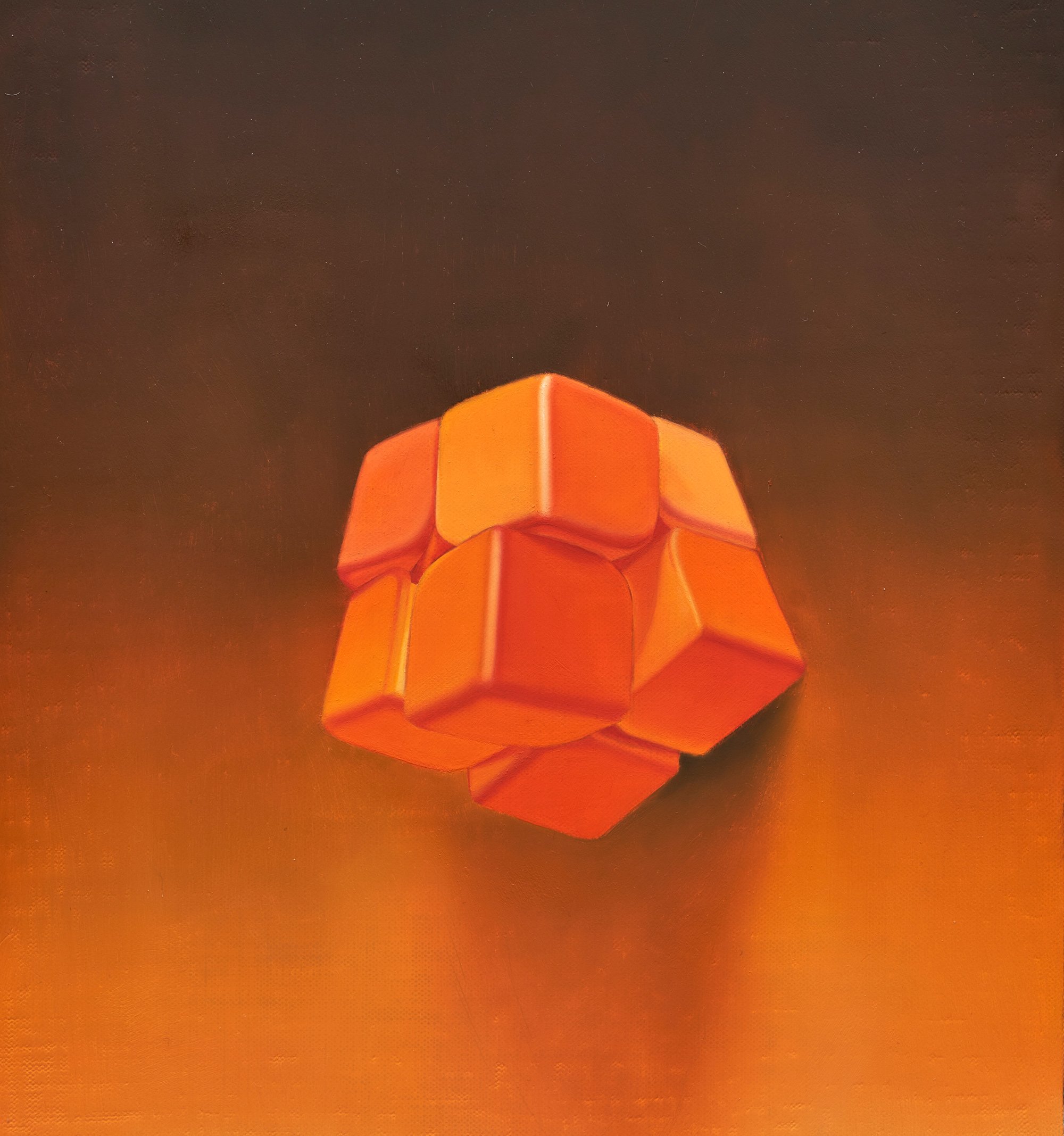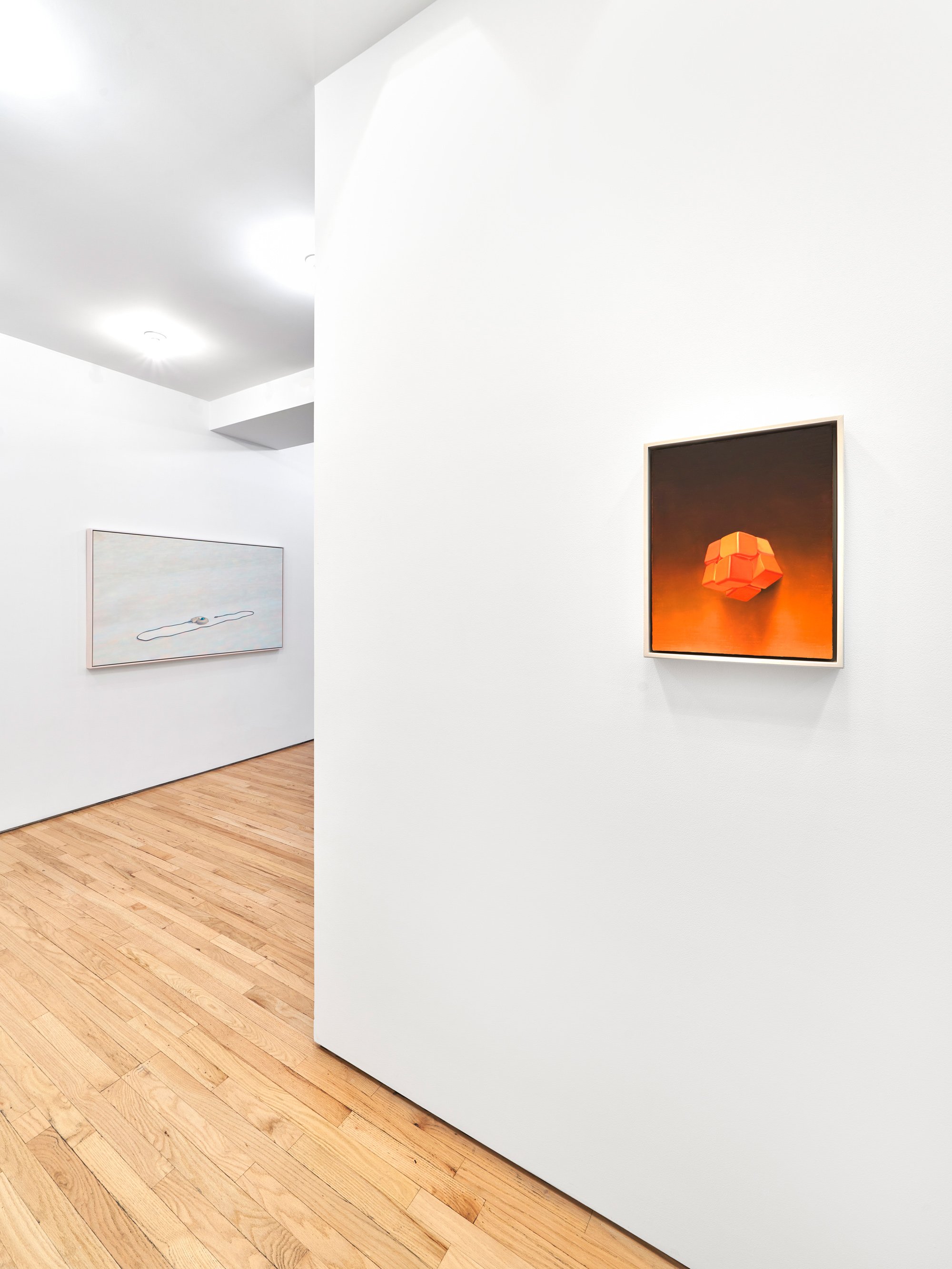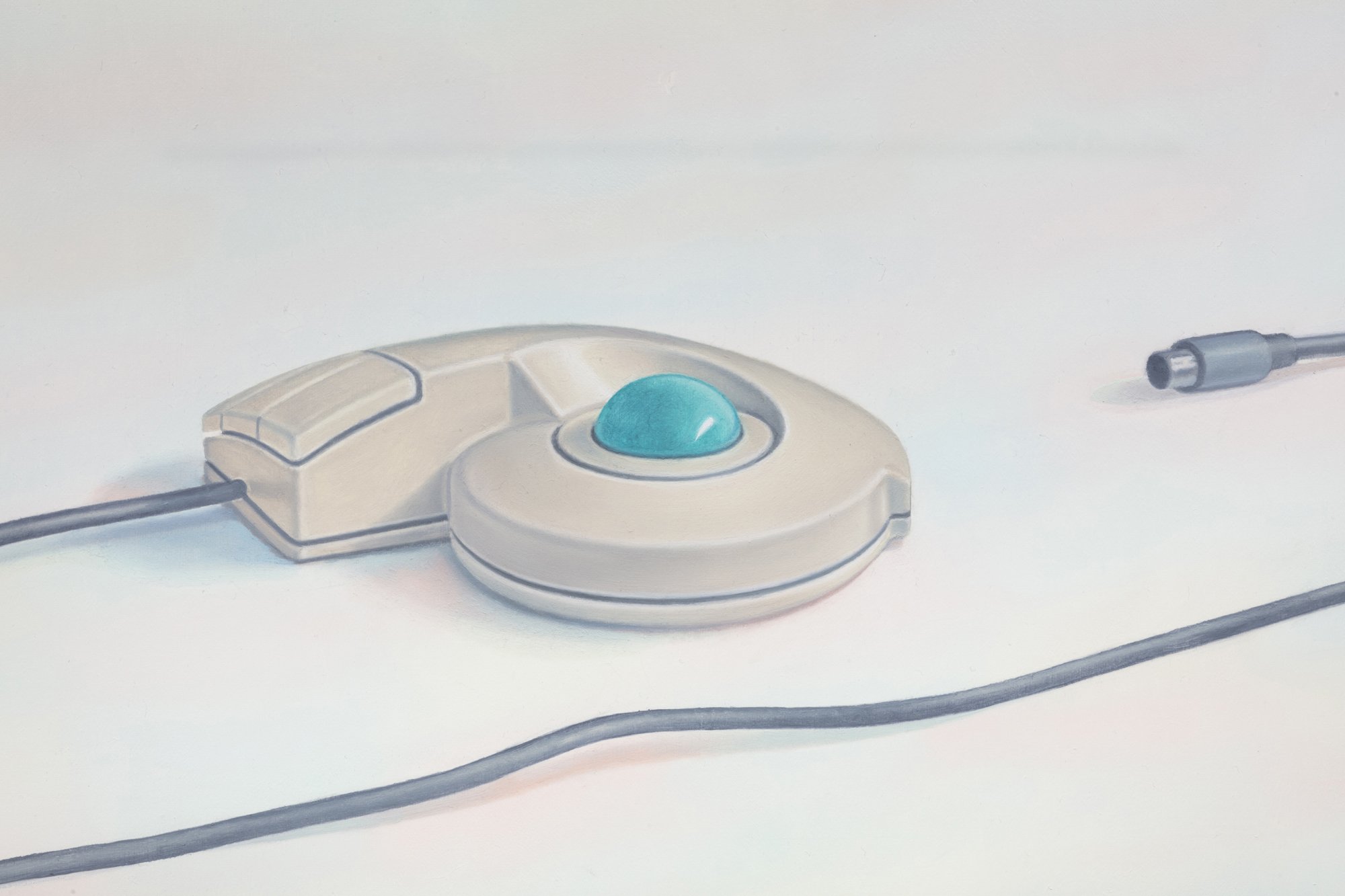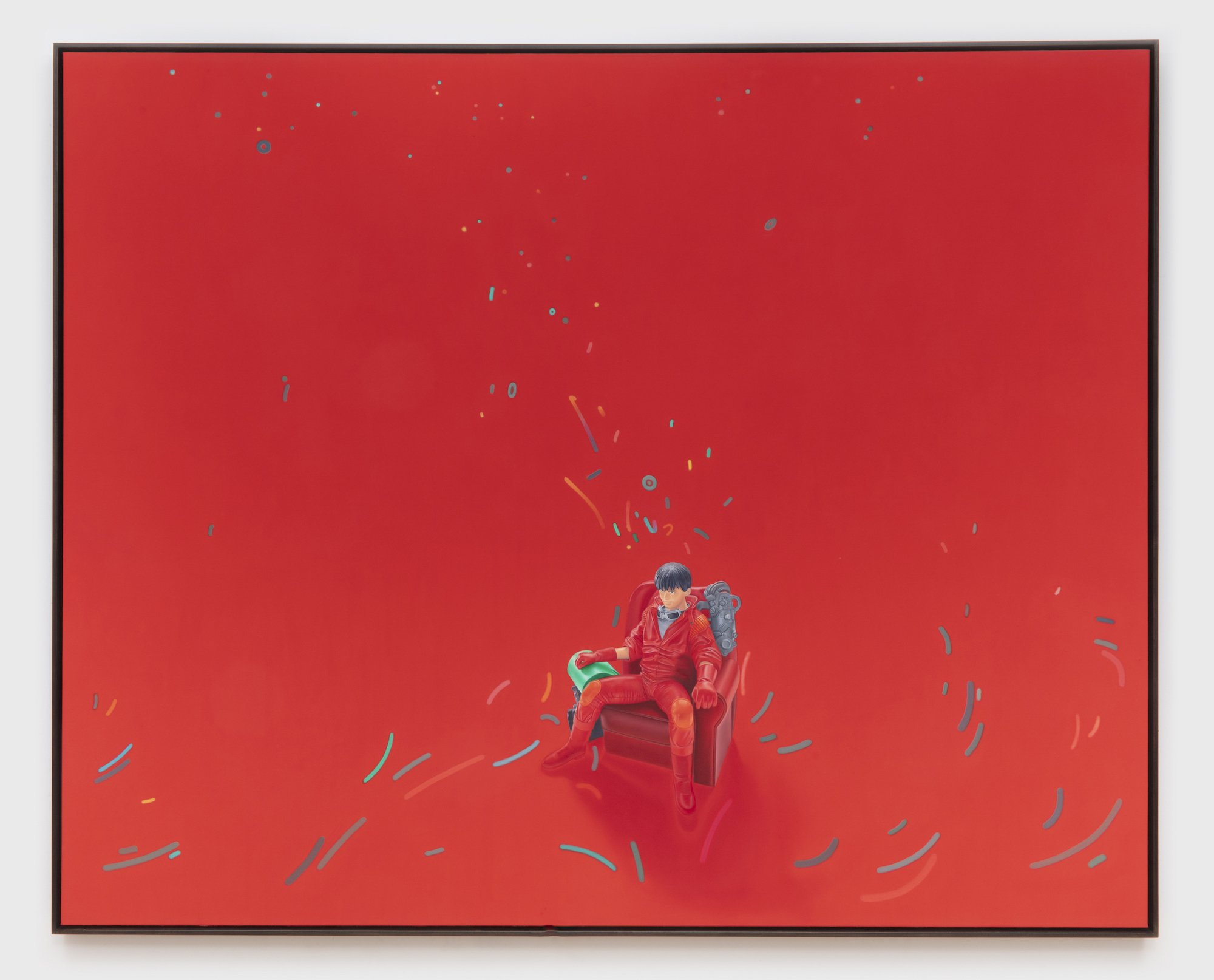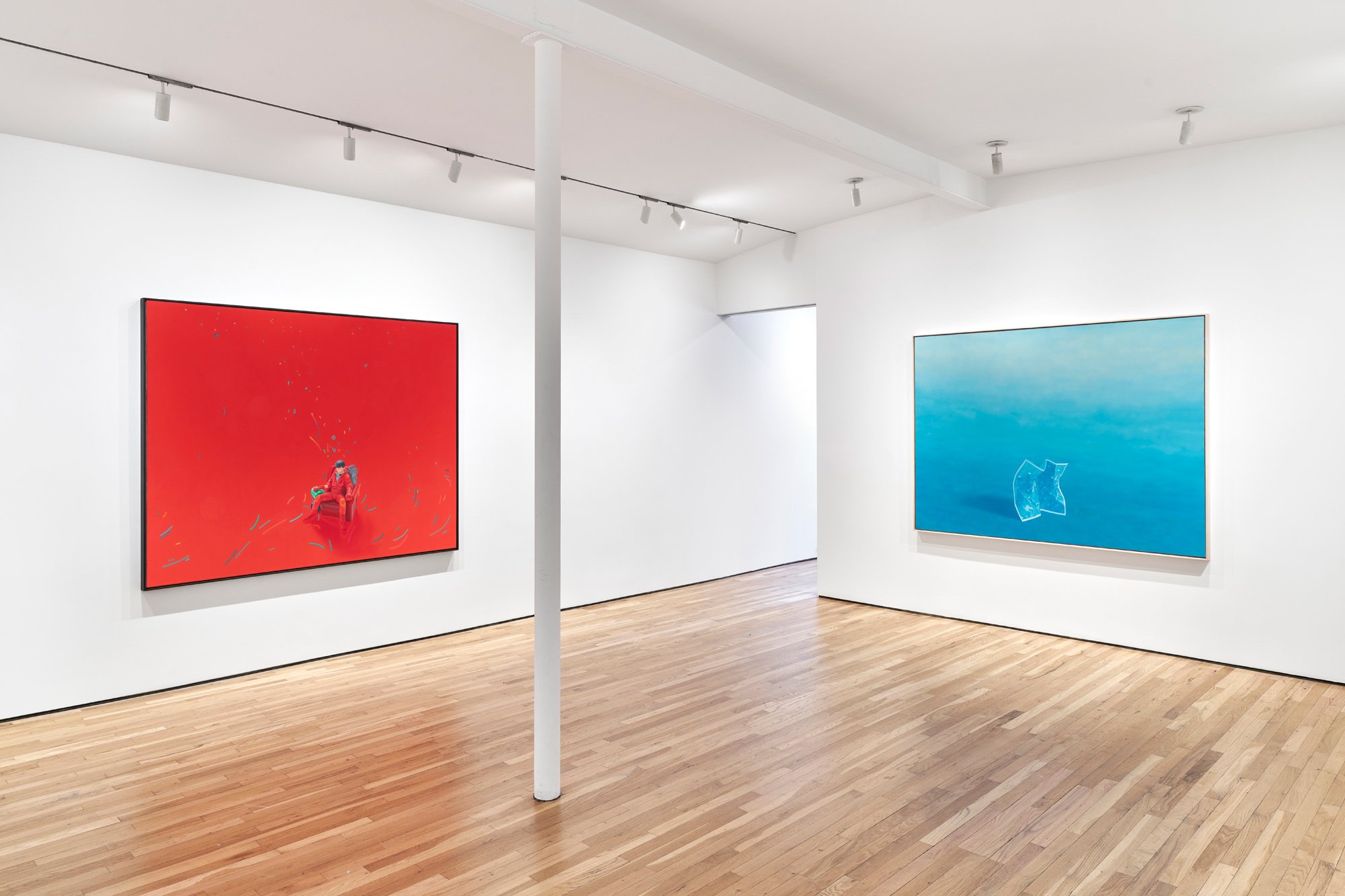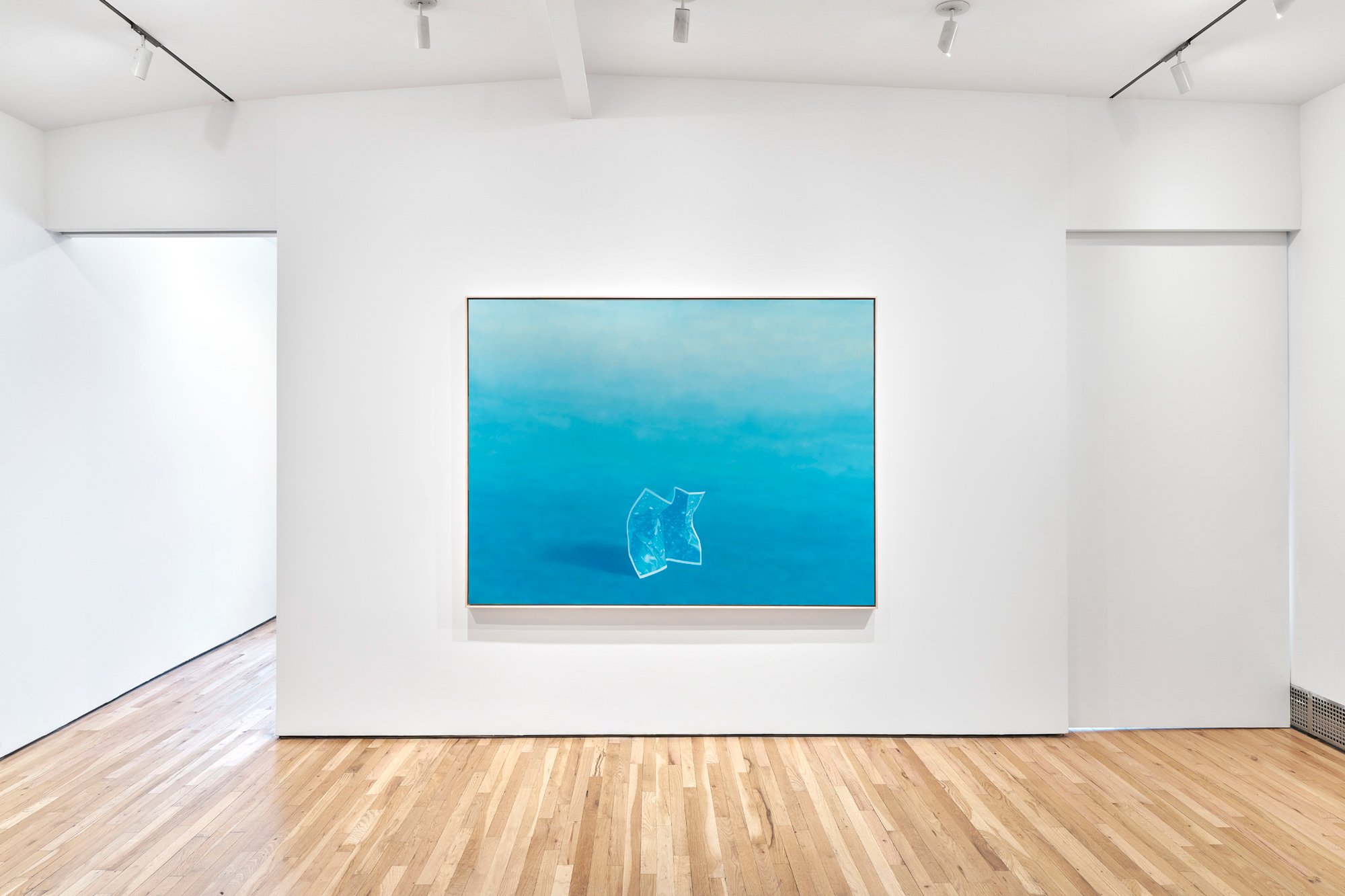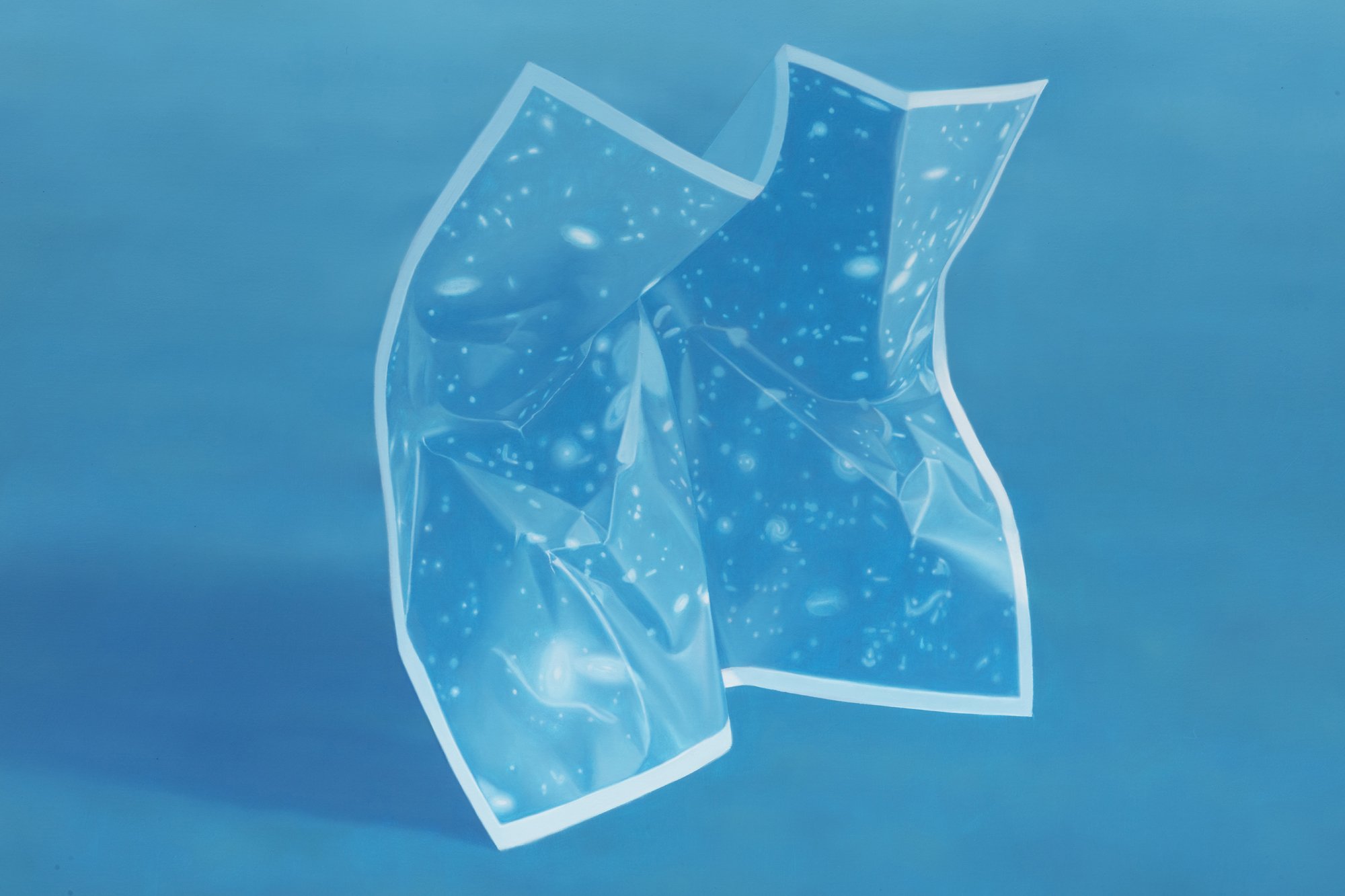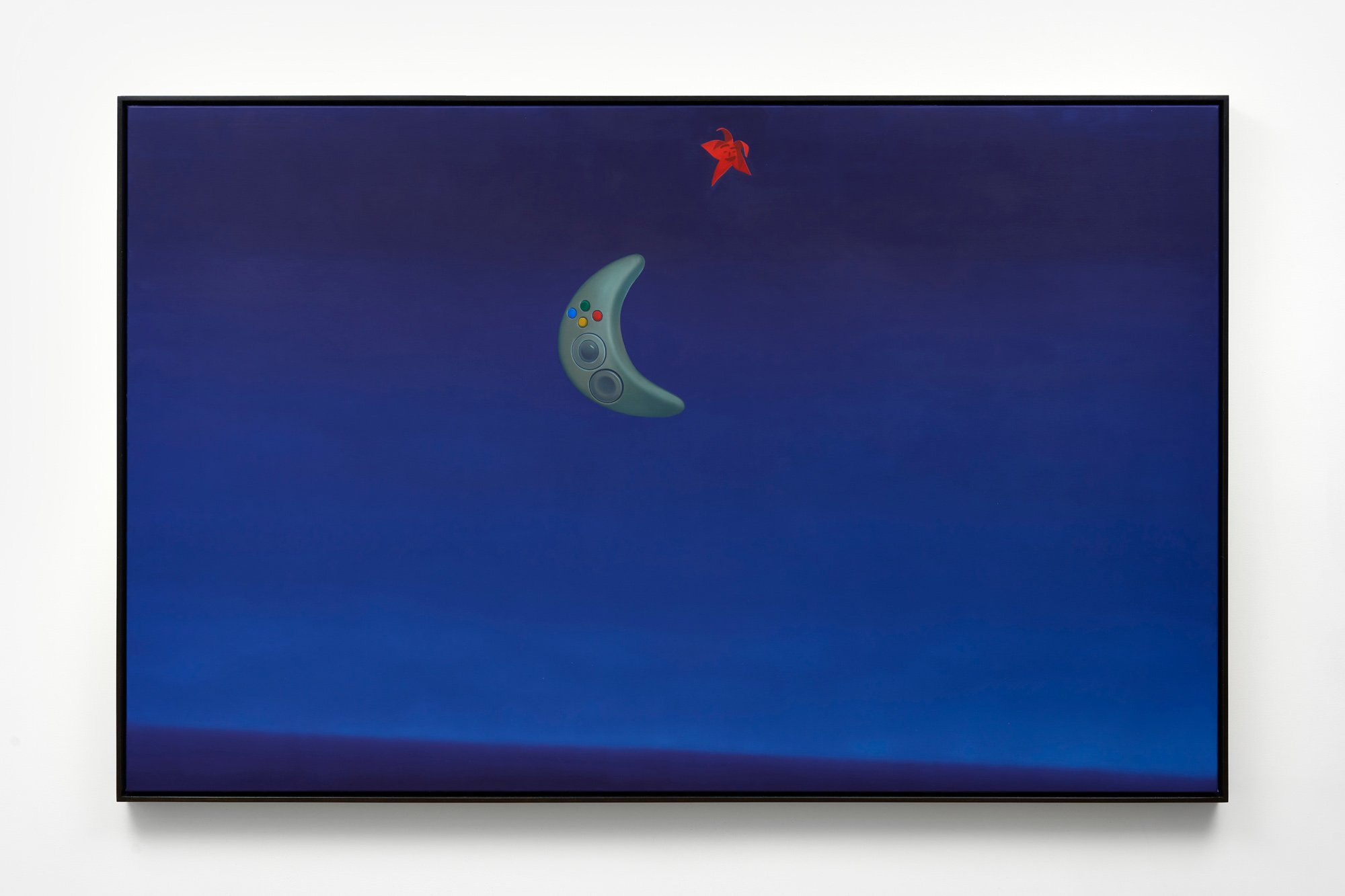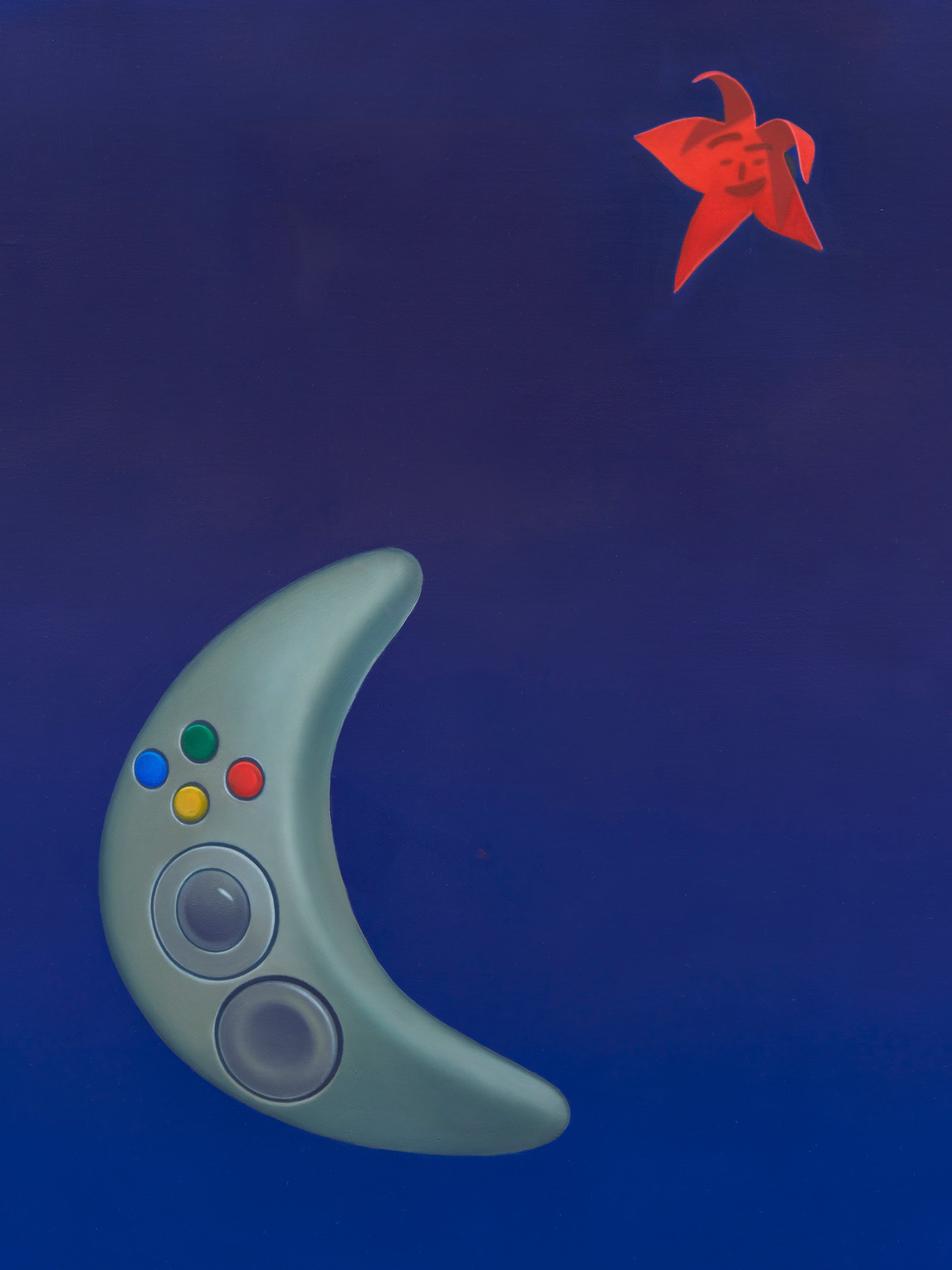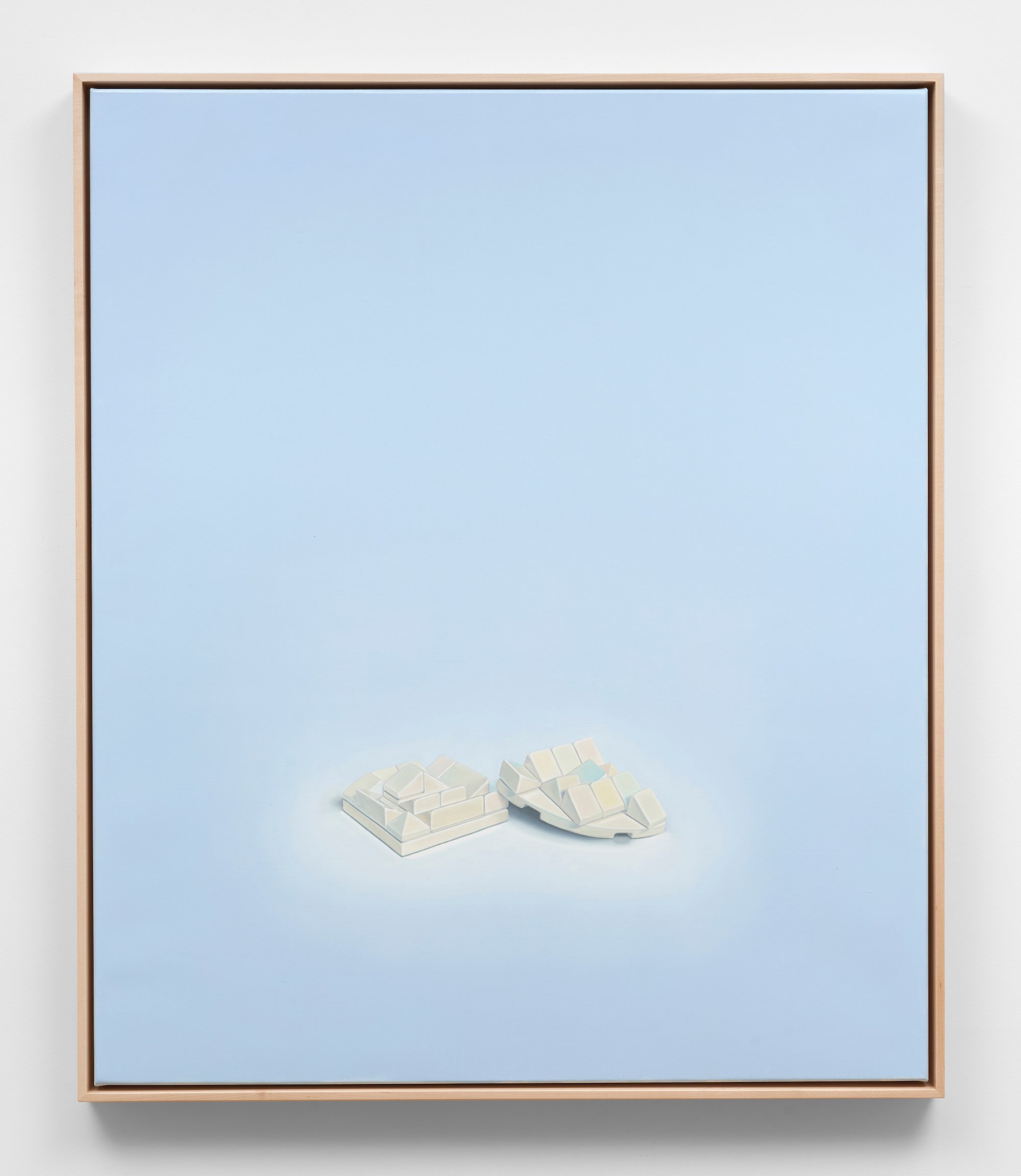Jake Kean Mayman
Jake Kean Mayman
Betterment Beyond
October 30 – December 14, 2024
1 Rivington Street, New York
CANDICE MADEY is pleased to present Betterment Beyond, the gallery’s second solo exhibition by Los Angeles–based artist Jake Kean Mayman. Mayman has long been interested in the relationship between art and technology. His meticulously rendered, richly colored still-life paintings of objects ranging from prosthetic limbs and virtual reality headsets to advanced fighter jets probe the history and future of technological innovation. Mayman stages these objects in isolation or in pairs against chromatic backdrops, presenting them for contemplation as outmoded artifacts or visions into the future. His time-honored method of oil painting anchors these icons of technological progression in tradition.
In previous exhibitions, Mayman has explored themes of technological ecologies and ergonomic prosthetics across various intellectual and historical contexts. Betterment Beyond unearths a past vision of human evolution that, though obscure in the West, resonates with existential problems we face today. Russian Cosmism, a speculative philosophy dating to the nineteenth century, sought to place human evolution under active scientific control. Writers such as Nikolai Fyodorov argued that death is a biological problem that can be solved, ending the scarcity and conflict that lead to wars and oppression.
By blending Charles Darwin’s scientific discoveries with aspects of Christian mysticism, Fyodorov charted an evolutionary trajectory toward human immortality. He and his followers believed that by mastering evolution, humanity would eventually be able to resurrect the dead and expand life into space. With the Russian Revolution of 1917, Fyodorov’s followers jettisoned the Christian undertones of his philosophy and projected his ideas onto a vision of a socialist utopia in space populated by resurrected ancestors and immortal souls. The rise of Stalinism brought the violent suppression of such heterodox views, yet Cosmist philosophy inspired the nascent space program and the Soviet cosmic imaginary more broadly.
Fyodorov and other Cosmist thinkers held art and its preservation in museums as a model for their technology of human evolution. Whereas technologies focused on material prosperity or military dominance instrumentalize and destroy life, art objects preserve human inventions in their obsolescence. The technology of museums has the ability to immortalize the present and resurrect the past for future generations. Art was construed as an imperfect technique that submits to nature and fails to intervene in human decay. However, by withstanding time, art establishes a paradigm for the technology of human evolution under the full control of science and reason.[1]
Mayman’s investigation of Russian Cosmist ideas from the vantage of painting carries a perverse logic. In his hands, the medium approaches a level of technological competence and rationality that is at odds with its artisanal roots. Applied to his technological subject matter, there is an alignment of form and subject, and yet the works are content to speak to this lost body of speculative thought, rather than enact its principles. Mayman’s compositions visualize our present-day cosmic imaginary: a painting of a wired Logitech rolling mouse from the 1990s suggests the spiral shape of a galaxy forming around a black hole; a Microsoft gaming controller in the form of a crescent moon contrasts with an image of a red star drawn by the artist’s daughter; the anime hero Kaneda from Akira is portrayed against an abstraction derived from an image of the cosmos captured by the James Webb Space Telescope. These paintings allude to Cosmist thought in various ways while remaining rooted in Western commodification. Mayman’s still-life subjects signify against the grain of their economic context, referring obliquely to lost histories through allusion and allegory.
Fyodorov’s conception of art as a technique of preservation conjures another salient modernist view of the past as a scrap heap of failed inventions and obsolete visions of the future. For Walter Benjamin, museums and works of art are shrines to auratic experience: perception-in-time that is subject to the vagaries of phenomena and ritual. Outmoded objects and technologies stripped of their cachet subvert fetishized exchange value and spark the profane illumination of “revolutionary nihilism.”[2] A symmetry exists between Benjamin’s imperative to view history politically and Fyodorov’s critique of misapplied science: both seek to reclaim technologies of domination as tools of emancipation.
Notions of defeating death and colonizing space may seem like the hallucinations of intellectuals drunk on mysticism and technophilia. However, they are shockingly persistent in the unvarnished wishes and exploits of today’s billionaires who are much closer to realizing their desires than the Cosmists ever were. Mayman’s paintings remind us that technology was not always fated to fuel competition and conflict, but has been envisioned as a means of emancipation from the forces of death and oppression. Amid our current trajectory of technological advance and social regress, Mayman reminds us that even the wildest philosophical and aesthetic speculation can speak to the persistent question, What is to be done?
— Liam Considine
Jake Kean Mayman (b. 1980, Los Angeles, CA) lives and works in Los Angeles. He received his BFA in painting from New York University in 2003. Solo exhibitions include Ergonoptics, Le Maximum, Los Angeles (2023); Technium Territories, CANDICE MADEY, New York (2021); Existing Structures, Stellar Projects, New York (2018); and The Earth Dies Screaming, Night Gallery, Los Angeles (2017). His work has been included in group exhibitions at CANDICE MADEY, New York; Matthew Brown, Los Angeles; SJ Weiler Fund, New York; Ochi Projects, Los Angeles; The Underground Museum, Los Angeles; Wilding Cran Gallery, Los Angeles; and The Pit, Los Angeles, among others. His work has been covered in the Los Angeles Times, Artforum, Artnet, New York Magazine, and Vulture.
[1] Nikolai Federov. “The Museum, Its Meaning and Evolution.” The Philosophy of The Common Task: Articles, Thoughts and Letters of Nikolai Fedorov, vol. 2., V. Kozhevnikov and N. Peterson, eds. (Verniy [now Alma-Ata]: 1906; Moscow: A. Snegireva’s Printing House, 1913), 398–473. Reprinted in Supercommunity, E-flux journal of the 56th Venice Biennial. http://supercommunity.e-flux.com/texts/the-museum-its-meaning-and-mission/
[2] Walter Benjamin. “Surrealism: The Last Snapshot of the European Intelligencia.” Translated by Edmond Jephcott. The New Left Review, I/108, Mar/Apr 1978. https://newleftreview.org/issues/i108/articles/walter-benjamin-surrealism-the-last-snapshot-of-the-european-intelligentsia
—


